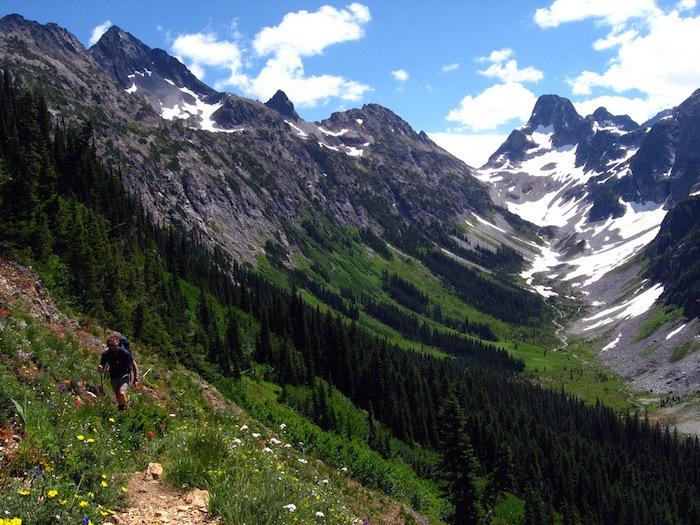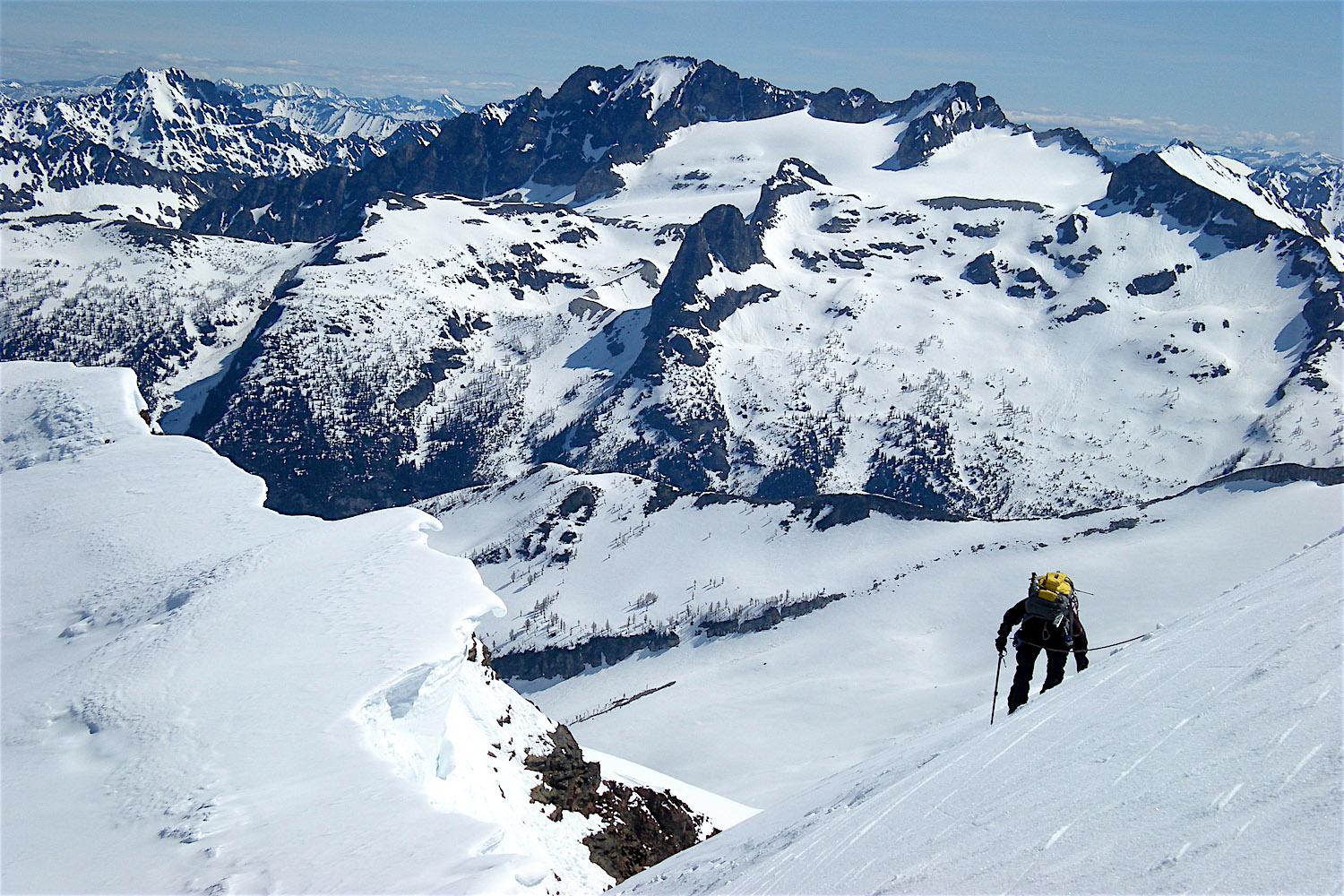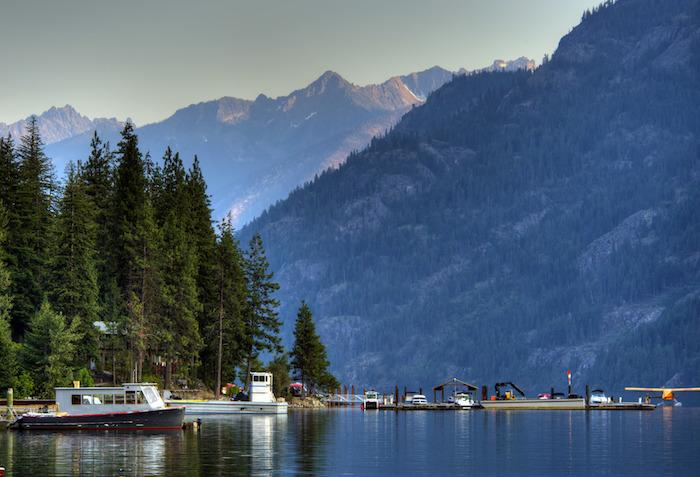
Re-examining the values that led to creation of North Cascades National Park/NPS
Editor's note: Next Tuesday marks the 50th birthday of North Cascades National Park. In light of that, Lauren Danner, who wrote Crown Jewel Wilderness: Creating North Cascades National Park, finds similar undercurrents today to those that spurred creation of that national park.
Fifty years ago, on October 2, 1968, President Lyndon B. Johnson signed North Cascades National Park into law.
In certain ways, today looks a lot like 1968. American society is struggling with cultural, racial, gender, and class divides. An unpopular president sits in the White House. And public support for the environment is strong. Most Americans want more wilderness preservation, better protections for wildlife, and adequate funding for maintaining national parks and forests amid skyrocketing demand for outdoor recreation.
When it comes to public lands policy, though, 2018 is unmistakably different. Current federal public lands policy, championed by Interior Secretary Ryan Zinke and several key members of Congress, clearly favors development over preservation. National monuments, sensitive marine environments, and endangered species have all taken hits.
While public lands advocates rightfully condemn current policy, they can look to the history of North Cascades National Park for a reason for optimism. Its lesson is relevant and timely: by speaking up for public lands, citizens do make a difference in policy decisions.
In the 1960s, ongoing concern about federal land management in the North Cascades coalesced into a local movement of ordinary citizens who demanded change in the face of entrenched and powerful commercial interests, primarily the timber industry. After years of grassroots advocacy, the creation of North Cascades National Park in 1968 reflected public sentiment demanding wilderness preservation and more federal lands reserved for outdoor recreation.
To be sure, the North Cascades was just one of many battles taking place across the nation. Many of those who worked for the park’s creation also worked for passage of the Wilderness Act in 1964. Indeed, the day the North Cascades bill was signed into law, President Johnson signed bills creating Redwood National Park, the Wild and Scenic Rivers System, and the National Trails System. Taken together, this sheaf of legislation embodied changing thinking about wild places, which Americans increasingly believed should also be protected for non-economic values. It was the beginning of a wave of new environmental policies. And it was just the beginning.

A desire for protection of key public lands led to creation of North Cascades National Park/NPS
The next year, spurred by public outrage over such disasters as the Santa Barbara oil spill and the Cuyahoga River fire, Congress passed the National Environmental Policy Act, requiring environmental impact reviews of federally funded projects. Twenty million people peacefully demonstrated on the first Earth Day in 1970. President Nixon created the Environmental Protection Agency later that year. Congress passed the Clean Air Act (1970), Clean Water Act (1972), and the Endangered Species Act (1973). It was a tidal wave of legislation to protect the environment, and signaled the maturation of the environmental movement into a professionalized, politically sophisticated endeavor that uses grassroots pressure and lawsuits to challenge policy that runs counter to established law and public opinion.
And that is exactly what we see today. When the Trump administration announced a review of 27 national monuments for possible boundary changes, Americans filed more than a million public comments, 98 percent of which favored keeping the monuments as is. While two monuments were shrunk, others appear to have been spared because of the deluge of public opposition. Despite the action on Bears Ears and Grand Staircase-Escalante, both of which are being challenged in court, none of the other monuments on the list was modified.
Much the same thing happened when Secretary Zinke proposed opening offshore oil and gas drilling in 90 percent of federal coastal waters, including protected areas. Public outrage was immediate and heartfelt. Many state officials from both parties, tourism industry representatives, and environmental groups decried the plan. Within three months, Zinke appeared to be backing down, although the Interior Department has yet to release its final five-year plan for offshore energy development. Once again, public opinion favoring environmental protection is influencing policy decisions.
And right in the heart of the North Cascades, a plan to restore the grizzly to its historic habitat in these wild mountains has also been buoyed by grassroots support. The last confirmed grizzly sighing here was in 1996, so bears will have to be imported to repopulate the region. In January 2017, the National Park Service and U.S. Fish and Wildlife Service released a draft Environmental Impact Statement outlining four options to restore the grizzly.

Stehekin at Lake Chelan in North Cascades National Park/Deby Dixon via NPS
Without giving a clear reason, Zinke unexpectedly stopped the grizzly process in December 2017, then visited North Cascades National Park headquarters in March 2018 to announce his support for bringing back the grizzly. Public opinion polls have shown strong support for restoring the grizzly, and more than 126,000 public comments were submitted during the EIS comment period. While the tenor of those comments is not yet known — federal officials are expected to announce their preferred restoration option by the end of this year — it’s a safe bet that once again, citizen voices will have an impact on the outcome.
It’s true that public lands have taken a hit under the Trump administration. But it’s also true that citizens are speaking up, just as they did more than 50 years ago in favor of creating North Cascades National Park, and they make a difference in environmental policy decisions. Today, more than 2 million acres of the North Cascades mountains are protected as national park, national recreation areas, and wilderness. It never would have happened without strong, vocal support from people who cherish their public lands.
Lauren Danner is the author of Crown Jewel Wilderness: Creating North Cascades National Park (Washington State University Press, 2017). She lives in Olympia, Washington, and writes about outdoor recreation, environmental history, and public lands at laurendanner.com.



Comments
Living in the shadow of NOCA [a bare 8 miles away] it is an honor to be here. The staff I know in the park are dedicated to taking responsibility for the land and spirit of the wilderness.
LET'S THANK LADY BIRD JOHNSON'S ROLE IN RESPECTING THE VALUE OF NATURE'S BEAUTY and in her promotion too of
REDWOOD NATIONAL PARK'S CREATION also on October 2nd, 1968.
How the wife of a president helped create the PCT
By Mark Larabee
https://www.pcta.org/2017/wife-president-helped-create-pct-45800/
Choose Your Adventure - Trails, Rivers & The North Cascades
https://www.npca.org/events/295-choose-your-adventure-trails-rivers-the-...
Fifty years of a wonderful National Park! I am grateful for all those who worked so hard to protect this special part of the world so many of us now call home. It's also good to remember that it's also still home to the indigenous Coast Salish People who have been here since time immemorial. I do wonder and am concerned for the next fifty years - and the young people who will take up the mantle of conservation leadership.
Amazing post! And even more amazing National Park! Photos are just stunning! It's just wonderful how can articles like this be an inspiration for somebody's essay. There are a lot of topics to write about but I prefer when it's all to praise nature, all these beautiful landscapes!